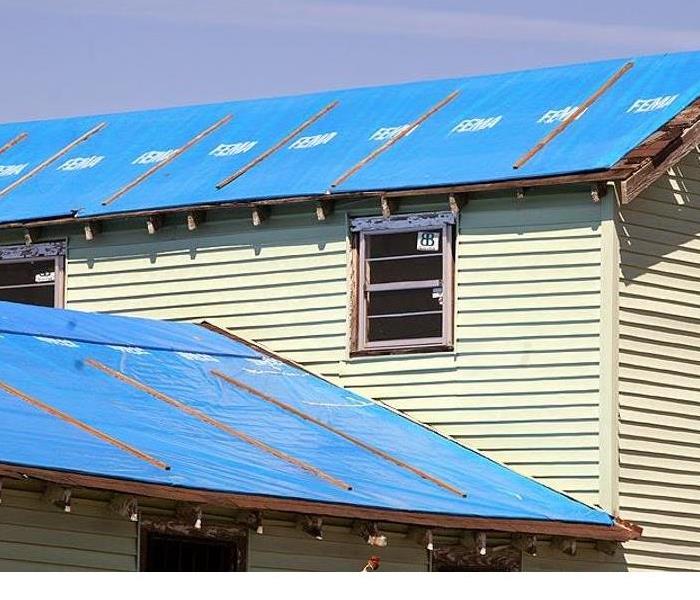What Does An Emergency Roof Tarp Do?
9/9/2020 (Permalink)
Emergency roof tarps help homeowners and property owners minimize the spread of damage after a bit of damage to your roof. To give you an idea, many roof leaks are negligible at first. There may be a small hole in the roof, but many homeowners don’t regularly check the area to notice, and if water damage is small and kept to an obscure area, like the attic, it may go unnoticed.
However, no leak stays small. In time, the damage will grow, and you will have a larger leak. This can mean major water damage, higher utility costs to counteract the air loss in the leak, as well as potential structural risk. The main purpose of an emergency roof tarp is to keep a roof leak in that initial stage until someone can come out to properly fix it.
This is accomplished through a few different phases that take place throughout the emergency roof tarp prep/installation process.
- Preparing for the tarp includes clearing out any debris and appraising the scale of the damage.
- Plywood is applied to the damaged area before the tarp goes on, serving as a second line of defense in case the tarp fails.
- Finally, the tarp is placed on top of the plywood, then secured with lumber.
Remember, the goal of an emergency roof tarp is not to “fix” a roof leak. It’s not a substitute for repair. Your home is still going to have some losses in terms of water resistance and energy efficiency until the roof is fixed. What the tarp does is slow down the spread of any potential leaks or damage until a professional can come and fix the roof properly.
The general life of a roof tarp is a few months. However, some longer-lasting tarps can go as long as a year or two. Make sure to ask what type you are getting when having your tarp installed.





 24/7 Emergency Service
24/7 Emergency Service
